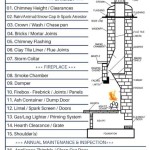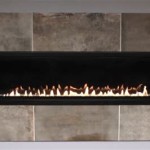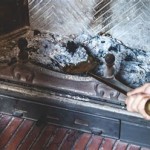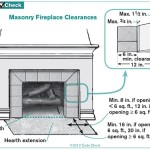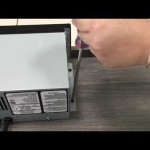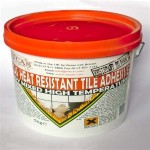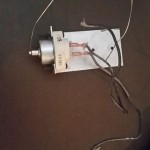In-Home Fireplaces: A Comprehensive Guide to Types, Benefits, and Safety
An in-home fireplace represents a significant addition to any dwelling, offering both aesthetic appeal and functional warmth. The market offers a diverse array of fireplace types, each with its own advantages and disadvantages, influencing factors such as installation complexity, fuel source, and heating efficiency. Understanding these differences is crucial for homeowners seeking to integrate a fireplace into their living space effectively and safely.
Beyond the practical benefits of heat generation, fireplaces often serve as a focal point within a room, enhancing its ambiance and overall value. The crackling sound of burning wood, combined with the visual display of flames, provides a sense of comfort and relaxation that other heating systems often lack. However, enjoying these benefits requires careful consideration of safety protocols, maintenance requirements, and environmental impacts.
Types of In-Home Fireplaces
The selection of an appropriate fireplace necessitates a thorough understanding of the various types available. Each type utilizes a different fuel source and employs distinct combustion mechanisms, resulting in variations in heat output, efficiency, and environmental impact.
Wood-Burning Fireplaces: These constitute the traditional image of a fireplace. They utilize wood as fuel, typically logs, and rely on natural draft for combustion and exhaust. Wood-burning fireplaces offer a classic aesthetic and a sensory experience unmatched by other types. However, they are generally less efficient than other options, with a significant portion of the heat escaping up the chimney. They also require a constant supply of firewood and regular cleaning to remove ash and creosote buildup, a flammable substance that can lead to chimney fires.
Furthermore, wood-burning fireplaces contribute to air pollution due to the release of particulate matter and other combustion byproducts. In some regions, regulations may restrict the use of wood-burning fireplaces during periods of high air pollution. Modern wood-burning fireplaces, often certified by organizations like the EPA, incorporate design elements that improve combustion efficiency and reduce emissions. These models feature features such as airtight doors, catalytic converters, and secondary combustion chambers, which burn off unburnt gases and particles.
Gas Fireplaces: As an alternative to wood-burning models, gas fireplaces utilize natural gas or propane as fuel. They offer convenience and ease of use, as they can be ignited with a simple switch or remote control. Gas fireplaces typically feature realistic-looking artificial logs or decorative elements that mimic the appearance of a wood-burning fire. They are generally more efficient than traditional wood-burning fireplaces, with a higher percentage of the heat being directed into the room rather than escaping up the chimney.
Gas fireplaces require professional installation to connect to a gas line and ensure proper venting. Venting options include direct-vent systems, which draw air from outside and exhaust combustion gases directly outdoors, and vent-free systems, which do not require a chimney or flue. Vent-free gas fireplaces are more flexible in terms of installation location, but they require careful monitoring of indoor air quality to prevent the buildup of carbon monoxide. Direct-vent systems are generally considered safer and more efficient.
Electric Fireplaces: Electric fireplaces represent the most convenient and versatile option for many homeowners. They do not require a chimney or venting system and can be plugged into a standard electrical outlet. Electric fireplaces use electric heating elements to generate heat, and they often feature realistic flame effects created by LED lights and mirrors. They offer a wide range of styles, from traditional mantels to modern wall-mounted units.
Electric fireplaces are highly efficient, as virtually all of the electricity consumed is converted into heat. They are also easy to operate and maintain, requiring minimal cleaning and no fuel storage. Electric fireplaces are an excellent choice for apartments, condominiums, or homes where installing a traditional fireplace is not feasible. However, their heat output may be lower than that of wood-burning or gas fireplaces, and they lack the authentic ambiance of a real fire.
Ethanol Fireplaces: Ethanol fireplaces burn liquid ethanol fuel, a renewable alcohol produced from plant sources. They do not require a chimney or venting system, making them suitable for a variety of indoor spaces. Ethanol fireplaces produce a clean-burning flame with no smoke, ash, or soot. They offer a modern and minimalist aesthetic and are available in various styles, including freestanding, wall-mounted, and tabletop models.
Ethanol fireplaces provide supplemental heat, but their heat output is typically lower than that of wood-burning or gas fireplaces. They require the purchase and storage of ethanol fuel, which can be more expensive than wood or gas. Safety precautions must be observed when handling ethanol fuel, as it is flammable. Adequate ventilation is also necessary to prevent the buildup of carbon dioxide during combustion.
Key Benefits of In-Home Fireplaces
Beyond their primary function of providing heat, in-home fireplaces offer a range of benefits that contribute to the overall comfort, ambiance, and value of a home.
Supplemental Heating: Fireplaces provide a supplementary source of heat that can lower heating costs during colder months. While not typically designed as primary heating systems, they can effectively warm a specific area of a house, reducing the need to crank up the central heating system. This targeted heating approach can lead to significant energy savings over time.
The efficiency of fireplaces in providing supplemental heat varies depending on the type of fireplace. Wood-burning fireplaces, while aesthetically pleasing, tend to be less efficient due to heat loss through the chimney. Gas fireplaces, particularly direct-vent models, are generally more efficient in directing heat into the room. Electric fireplaces offer high efficiency as they convert virtually all electricity into heat. However, their heat output may be limited compared to other fireplace types.
Enhanced Ambiance: The aesthetic appeal of a fireplace is undeniable. The flickering flames create a warm and inviting atmosphere, adding a touch of elegance and sophistication to any room. The visual display of a fire, combined with the crackling sounds of burning wood, provides a sense of relaxation and comfort that is difficult to replicate with other heating systems.
Fireplaces often serve as a focal point within a room, drawing attention and creating a sense of coziness. They can be incorporated into a variety of design styles, from traditional to contemporary, adding character and charm to the living space. The presence of a fireplace can also enhance the home's resale value, as many buyers are drawn to the aesthetic and functional benefits it offers.
Emergency Heat Source: In the event of a power outage, a fireplace can provide a vital source of heat and light. This can be particularly important during winter months, when temperatures can drop dangerously low. Wood-burning fireplaces are especially valuable in such situations, as they do not rely on electricity to operate. Gas fireplaces with battery backup systems can also provide emergency heat. Electric fireplaces, however, are rendered unusable during a power outage.
Having a reliable source of heat during a power outage can help maintain a comfortable and safe environment for occupants. It can prevent pipes from freezing, protect against hypothermia, and provide a sense of security during an emergency. Fireplaces can also be used to cook food and boil water, further enhancing their value in emergency situations.
Safety Considerations for In-Home Fireplaces
While fireplaces offer numerous benefits, it is imperative to prioritize safety when operating and maintaining them. Neglecting safety protocols can lead to serious hazards, including fires, carbon monoxide poisoning, and injuries.
Regular Inspections and Maintenance: All types of fireplaces require regular inspections and maintenance to ensure safe and efficient operation. Wood-burning fireplaces necessitate regular chimney sweeps to remove creosote buildup. Gas fireplaces require professional inspection to check for gas leaks and ensure proper venting. Electric fireplaces should be inspected for damaged cords or heating elements. Ethanol fireplaces require careful attention to fuel handling and ventilation.
Chimney sweeps should be performed at least annually, or more frequently if the fireplace is used regularly. Gas fireplace inspections should be conducted by a qualified technician every one to two years. Promptly addressing any issues identified during inspections can prevent potentially dangerous situations.
Carbon Monoxide Detectors: Carbon monoxide (CO) is a colorless, odorless gas that can be produced by incomplete combustion in fireplaces. CO poisoning can be fatal, so it is crucial to install carbon monoxide detectors in homes with fireplaces. Detectors should be placed near sleeping areas and tested regularly to ensure they are functioning properly. The batteries should be replaced annually or as needed.
Symptoms of CO poisoning include headache, dizziness, nausea, and confusion. If anyone experiences these symptoms, they should immediately evacuate the home and seek medical attention. It is also important to ensure that fireplaces are properly vented to prevent the buildup of CO indoors.
Safe Fuel Storage and Handling: Proper storage and handling of fuel are essential for preventing fires and other accidents. Firewood should be stored away from the house and covered to protect it from the elements. Gasoline or other flammable liquids should never be used to ignite a fire. Gas fireplaces should be connected to a gas line by a qualified technician. Ethanol fuel should be stored in a cool, dry place away from heat and open flames. Always follow the manufacturer's instructions for fuel handling and storage.
Children and pets should be kept away from fireplaces to prevent burns and other injuries. Fire screens or guards can provide an additional layer of protection. Never leave a fire unattended, and ensure it is completely extinguished before leaving the house or going to bed. By adhering to these safety guidelines, homeowners can enjoy the benefits of in-home fireplaces while minimizing the risks.

5 Benefits Of Having A Fireplace In Your Home Vertical Chimney Care

How To Use A Fireplace Bob Vila

Pros And Cons Of A House With Fireplace Rismedia

Heating Your Home With A Fireplace Doctor Flue Mi Oh

House Home 75 Fireplaces To Warm Up Your During The Colder Months

How Fireplaces Work Howstuffworks

Does A Fireplace Add Value To Home In Today S Market
10 Reasons To Add A Gas Fireplace Your Home Heat Glo

Do I Need A Fireplace In My New Home Direct Fireplaces

How To Heat Your Home With A Fireplace Homeserve Usa
Related Posts

